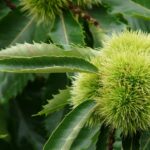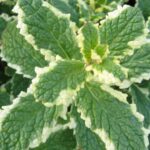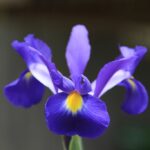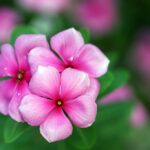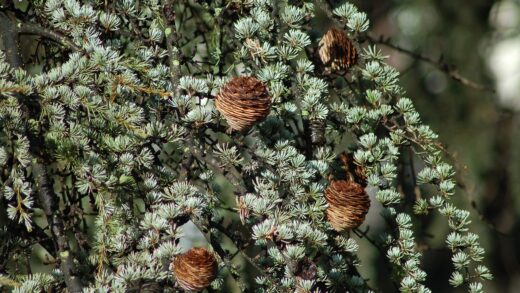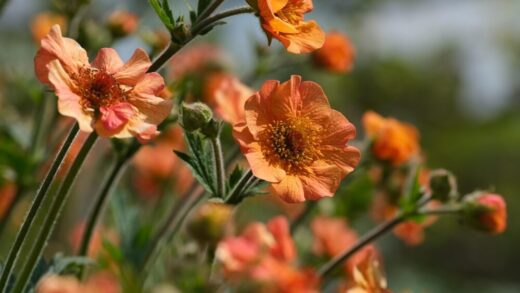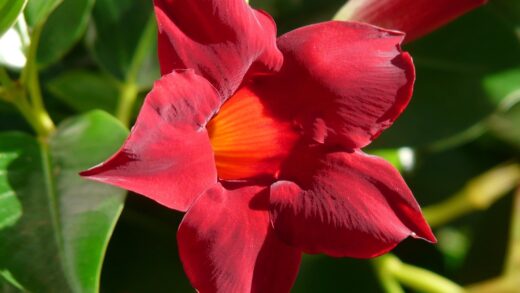While pineapple sage is a relatively robust and trouble-free plant, it is not entirely immune to the challenges posed by various pests and diseases. Proactive management and a keen eye for early signs of trouble are the best defenses for keeping your plant healthy and thriving. Most issues that arise are directly linked to suboptimal growing conditions, such as poor air circulation, improper watering, or nutrient stress. Therefore, the first and most effective line of defense is always to provide the plant with its ideal environment: full sun, excellent drainage, and adequate space. A healthy, vigorous plant is far more capable of shrugging off minor pest attacks and resisting diseases than one that is already stressed.
The most common pests that may trouble pineapple sage are typically sap-sucking insects. These include aphids, whiteflies, and spider mites, which feed by piercing the plant’s tissues and extracting the nutrient-rich sap. While a small infestation is unlikely to cause significant harm, large populations can weaken the plant, leading to yellowing leaves, stunted growth, and a sticky residue known as honeydew. This honeydew can, in turn, lead to the growth of sooty mold, a black fungus that, while not directly harming the plant, can interfere with photosynthesis by coating the leaf surfaces. Regular inspection of the undersides of leaves, where these pests often congregate, is key to catching infestations early.
In terms of diseases, the most prevalent affliction for pineapple sage is powdery mildew. This fungal disease appears as a conspicuous white, dusty coating on the surfaces of leaves, stems, and sometimes flowers. It thrives in conditions of high humidity and poor air circulation, which is why proper spacing between plants is so crucial. While it is rarely fatal, a severe infection can reduce the plant’s vigor, cause leaf distortion, and is aesthetically unappealing. Powdery mildew is most common during the warm, humid days and cool nights of late summer and autumn.
Preventative measures are far more effective than reactive treatments for managing both pests and diseases. Start by selecting healthy, disease-free plants from the nursery. Ensure you plant them in a location that meets their needs, paying special attention to sunlight and soil drainage. Avoid overhead watering to keep the foliage as dry as possible, and water in the morning to allow for rapid drying. Pruning to thin out dense growth can also improve air circulation through the plant’s canopy, making it a less hospitable environment for fungal spores and pests. A holistic approach focusing on plant health is the cornerstone of integrated pest management.
Proactive prevention strategies
The most effective way to deal with pests and diseases on pineapple sage is to prevent them from becoming a problem in the first place. This proactive approach begins with the very foundation of the plant’s care: its environment. A plant that is thriving in its ideal conditions—full sun, well-drained soil, and good air circulation—has a natural resilience that makes it less attractive to pests and less susceptible to pathogens. Stress, whether from too much shade, waterlogged roots, or drought, weakens the plant’s defenses and essentially sends out an open invitation to opportunists.
More articles on this topic
Proper garden hygiene is another critical component of prevention. This involves keeping the area around your pineapple sage clean and free of debris. Fallen leaves and other organic matter can harbor fungal spores and provide a hiding place for pests like slugs and snails. Regularly remove any dead or yellowing leaves from the plant itself. If you do have to remove diseased plant material, be sure to dispose of it in the trash rather than the compost bin to avoid spreading the pathogens. Also, be sure to clean your pruning tools with alcohol or a bleach solution between plants to prevent cross-contamination.
Encouraging beneficial insects in your garden is a powerful and natural form of pest control. Ladybugs, lacewings, and hoverflies are voracious predators of aphids and other common pests. You can attract these helpful allies by planting a diversity of flowering plants, particularly those with small flowers like dill, fennel, and yarrow, which provide them with nectar and pollen. Avoiding the use of broad-spectrum chemical pesticides is also essential, as these indiscriminate poisons will kill the beneficial insects along with the pests, disrupting the natural balance of your garden’s ecosystem.
Finally, regular monitoring is a simple but vital preventative strategy. Take the time to inspect your pineapple sage closely every few days. Look at the tops and bottoms of the leaves, check the stems, and examine the new growth at the tips. The sooner you can spot a few aphids or the first signs of powdery mildew, the easier it will be to manage the problem. Early intervention, such as washing pests off with a strong jet of water or removing a few affected leaves, can often stop a small issue from escalating into a full-blown infestation that requires more drastic measures.
Common insect pests and their control
Aphids are one of the most frequent insect pests you might find on pineapple sage. These small, pear-shaped insects come in various colors (often green or black) and typically cluster on the tender new growth and the undersides of leaves. They feed by sucking the sap from the plant, which can lead to distorted or curled leaves, yellowing, and reduced vigor. They also excrete a sticky substance called honeydew, which can attract ants and promote the growth of sooty mold. Fortunately, aphids are relatively easy to control, especially if caught early.
More articles on this topic
For a small infestation of aphids, the simplest and often most effective control method is a strong spray of water from a garden hose. This physically dislodges the pests from the plant. This may need to be repeated every few days for a week or so to deal with any survivors and newly hatched aphids. For more persistent problems, insecticidal soap or horticultural oil can be very effective. These products work by smothering the soft-bodied insects and have a low impact on beneficial insects, provided they are applied carefully and directly to the pests. Always follow the label instructions and apply in the evening or on a cloudy day to prevent leaf scorch.
Whiteflies are another common sap-sucking pest. These tiny, moth-like insects will fly up in a cloud when a disturbed plant is shaken. Like aphids, they congregate on the undersides of leaves and cause similar damage through their feeding. They are notoriously difficult to control because the adult stage can simply fly away from treatments. Yellow sticky traps can be very effective at capturing the flying adults, which can help to monitor and reduce their populations. Repeated applications of insecticidal soap or horticultural oil are necessary to target the immobile nymph stages on the leaves.
In all cases, promoting a healthy population of natural predators is the best long-term solution. Ladybugs and their larvae are particularly effective predators of both aphids and whiteflies. You can sometimes purchase ladybugs for release in your garden, but creating a welcoming habitat is a more sustainable approach. By avoiding broad-spectrum pesticides and planting a variety of flowering plants, you create a balanced ecosystem where pest populations are less likely to get out of control, as their natural enemies will be present to keep them in check.
Fungal diseases and moisture management
Powdery mildew is the most significant disease threat to pineapple sage, and its presence is almost always linked to environmental conditions. This fungal disease is easily identified by the characteristic white or grayish, powder-like patches that form on the surface of the leaves. Unlike many other fungi that require standing water on leaves to germinate, powdery mildew thrives in high humidity and can infect dry leaf surfaces. It is most prevalent in crowded plantings with poor air circulation, and during periods of warm days followed by cool, damp nights.
Prevention is centered on moisture management and airflow. Spacing plants appropriately from the outset is the most important step. If a plant becomes overly dense, selectively prune some of the inner stems to open up the canopy and allow air to move freely through the foliage. Avoid overhead watering, which can increase the ambient humidity around the plant. If you must water from above, do so in the morning so the leaves have the entire day to dry out. A location with full sun is also beneficial, as the sunlight can help to burn off excess moisture and inhibit fungal growth.
If powdery mildew does appear, early intervention is key to controlling its spread. At the first sign of the white patches, prune off and destroy the affected leaves. For a more widespread infection, several organic treatments can be effective. A spray made from a solution of one part milk to nine parts water, applied in bright sunlight, can help to control the fungus. Horticultural oils and neem oil are also effective fungicides that work by smothering the fungal spores. It is important to coat all surfaces of the plant, including the undersides of leaves, and repeat applications may be necessary.
Root rot is another potential fungal issue, though it is entirely preventable with proper planting and watering. This disease is caused by soil-borne fungi that attack the plant’s roots in anaerobic, waterlogged conditions. The symptoms appear above ground as wilting, yellowing leaves, and a general failure to thrive, even when the soil is wet. By the time these symptoms are obvious, the damage to the root system is often extensive and irreversible. The only “cure” for root rot is prevention: ensuring your pineapple sage is planted in soil with excellent drainage and allowing the soil to dry out appropriately between waterings.
Integrated pest management principles
Integrated Pest Management (IPM) is a holistic and intelligent approach to controlling pests and diseases in the garden. It moves away from a reliance on routine chemical spraying and instead uses a combination of strategies to keep pest populations below a damaging level. The foundation of IPM for pineapple sage is cultural control, which involves creating a healthy growing environment. This includes choosing the right planting site, ensuring proper soil preparation, using correct watering techniques, and providing adequate nutrition. A strong, healthy plant is the first and best line of defense.
The next level of IPM is mechanical and physical control. This involves hands-on tactics to remove pests. This could be as simple as hand-picking larger pests, using a strong jet of water to dislodge aphids, or setting up physical barriers and traps. For pineapple sage, regularly inspecting the leaves and physically removing pests or the first few leaves showing signs of disease falls into this category. Pruning out infested or diseased plant parts is another crucial mechanical control method that can stop a problem from spreading.
Biological control is a cornerstone of a successful IPM program. This strategy focuses on using the pests’ natural enemies to control their populations. By fostering a garden environment that is hospitable to beneficial insects like ladybugs, lacewings, parasitic wasps, and predatory mites, you can establish a self-regulating system. This means planting a diversity of plants to provide food and shelter for these allies and, most importantly, completely avoiding the use of broad-spectrum chemical pesticides that would harm these beneficial populations.
The final step in an IPM strategy, used only as a last resort when other methods have failed and the pest population has reached an unacceptable threshold, is the use of chemical controls. However, IPM prioritizes the use of the least toxic options first. For pineapple sage, this would mean choosing biorational pesticides like insecticidal soaps, horticultural oils, or neem oil over synthetic, broad-spectrum chemicals. These softer options are generally more targeted, break down more quickly in the environment, and have less of a negative impact on beneficial organisms.







